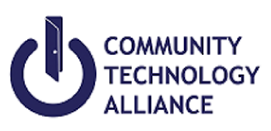Considering Collaborating? Things to ask before you pair up.
April 11, 2018
No organization can end homelessness on its own. More and more, agencies are recognizing the need to collaborate. It’s been shown that the more social service agencies coordinate, the more homeless and at-risk clients can access services and housing. It takes a team effort to change a life.
Luckily, these days you have access to open-source tools, data analytics, and other technological advances that let you work in parallel toward the same greater good. It’s never been more possible to expand your reach.
Increasingly, funders are advocating that agencies forge interactive and interdependent relationship. Funders, consultants and others are also encouraging agencies to invest in technologies that invest in social outcomes.
But, before you pair up with another agency or invest in technology, you need to do your due diligence. Here are some things to consider for your potential partnerships:
Set Transparent Ground Rules. Before you reach an agreement with a potential partner, you need to have a clear understanding between both parties of what client data you can and cannot share.
Set Your Policy. Don’t let technological restraints dictate what you can and cannot do. Determine what you need and build out from there. A good developer will do what you ask. A great one will ask clarifying questions and talk to you about best practices in the field. If you don’t set your policy before you set loose your technology, you’ll be locked into proprietary systems. Worse, your agenda will be set by constraints, not conscious choice.
Policy should drive technology, not the other way around the other way around
Open-source technologies make it possible for agencies to quickly and nimbly respond to ever changing conditions.
When you’re able to harness insights you can spot community trends and understand where to invest your resources. When you’ve ensured that policy drives technology, you can use technology to your benefit and not be hampered by it.
Given the rapid rate of technological changes, it’s understandable why communities are not sure what new technologies to invest in. Here’s are some elements to consider:
Break down siloes. Get a single view of the client across multiple agencies. Collect clean data and make informed, compassionate choices. Ask yourself:
- Where is all your data? Can any one person or department access all your data?
- How many silo-edsystems does your agency have? The more siloes, the harder it is to make data-driven decisions.
- How long does it take you to answer ‘simple’, fundamental questions, such as “How many people are we currently serving? How effective are our efforts? Where were we this time last year?”
- How long does it take you to conduct real-time analytics? Hint: With today’s technology, it shouldn’t take longer than updating your Facebook profile.
Automation. Simplify decision-making and free up staff to invest their compassion and expertise with clients, providing the human touch where it is needed most. Ask yourself:
- How much time does your staff spend entering the same data in different systems? Wouldn’t that time be better spent personally interacting with clients?
- Use of paper and spreadsheets and other workarounds can lead to a lot of waste. How much time does staff spend playing phone tag with clients and each other?
- Technology used to automate processes can deliver data in a continuous feedback loop that can be used for performance metrics. How long does it currently take to generate a performance metric report?
Technology on its own is not the magic answer. But using technology to enable collaborations and analyze data can dramatically improve the delivery and impact of human services.
Have you recently tried to collaborate with another organization? What did you learn from the experience? Share your story.

